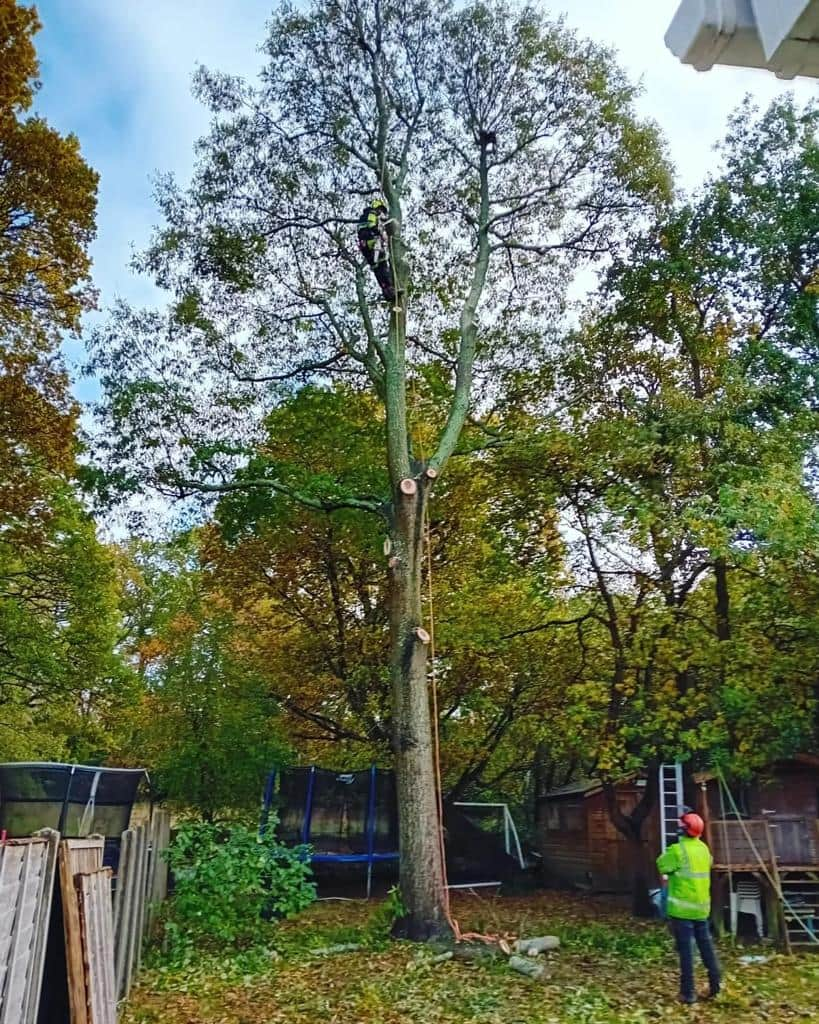As a new homeowner in Ware, Hertfordshire, you may find that maintaining your outdoor space is just as important as maintaining the inside of your property. One crucial aspect of garden maintenance is hedge cutting. Whether you’re dealing with well-established hedges or new growth, proper hedge care ensures that your garden remains tidy, healthy, and visually appealing.
In this article, we will guide you through the essential steps for hedge cutting during your first year as a homeowner, helping you to make the most of your outdoor space. At Ware Tree Surgeons, we specialise in hedge cutting and tree surgery services, providing expert advice to homeowners in the area.
Why Hedge Cutting is Important for New Homeowners
Hedge cutting is more than just about appearance—it’s essential for the overall health of the hedge and the safety of your property. Regular trimming promotes strong growth and helps maintain the shape and structure of your hedges. It also prevents them from becoming overgrown, which could block pathways, reduce light, or even damage nearby structures.
Benefits of Hedge Cutting:
- Healthier Growth: Cutting encourages dense, bushy growth, preventing the hedge from becoming sparse and leggy.
- Improved Aesthetics: Regular trimming keeps your hedges looking neat and tidy, enhancing the overall look of your garden.
- Better Control: Trimming the hedges allows you to control their shape and size, keeping them within desired boundaries.
- Prevents Overgrowth: Untended hedges can quickly become unruly and may invade other areas of your garden or affect the foundation of your home.
What to Do in the First Year as a New Homeowner
When you first move into a new property, your hedges may require some immediate attention to ensure they grow correctly and remain healthy. Here’s a guide on what to do in your first year as a new homeowner:
1. Assess the Condition of Your Hedges
Before making any cuts, take some time to assess the condition of your hedges. Are they well-maintained, or have they been neglected? Look for signs of disease, pests, or overgrowth. Check the size and shape of the hedges to determine how much trimming is necessary.
- Look for dead or damaged branches: Remove any branches that appear dead, diseased, or broken.
- Identify areas of weakness: If certain sections are sparse, they may need more trimming to encourage denser growth.
2. Understand the Type of Hedge You Have
Different types of hedges require different care. For example, evergreen hedges need to be trimmed to maintain their shape, while deciduous hedges may not need as much attention in the first year. Familiarising yourself with the specific needs of your hedge will ensure you take the correct approach.
- Evergreen hedges: These require more regular trimming, usually once or twice a year.
- Deciduous hedges: These can be cut in the late winter or early spring when they are dormant.
- Flowering hedges: If you have flowering hedges, it’s essential to know when to trim them to avoid cutting off any buds.
3. Trim at the Right Time
Timing is key when it comes to hedge cutting. The best time to trim hedges depends on the type of hedge, but for most hedges, the ideal period is during late spring or early summer, just after they’ve started growing actively.
- Late spring: Ideal for most hedges, as they’ve finished their initial burst of growth.
- Late winter or early spring: The best time to prune deciduous hedges or to perform a more extensive trim.
4. Use the Right Tools
Having the right tools for the job will make hedge cutting much easier and more effective. The tools you need may depend on the size of your hedge and the thickness of the branches.
- Hand shears: Best for small hedges with thin branches.
- Electric hedge trimmers: Ideal for medium-sized hedges that need more frequent trimming.
- Pole pruners: Perfect for tall or hard-to-reach hedges.
- Chainsaws: Used for larger, older hedges with thick branches.
Make sure your tools are sharp and well-maintained to ensure clean cuts and prevent damage to the hedge.
5. Shape Your Hedges
When trimming your hedges, it’s important to maintain their shape and ensure they grow evenly. Cutting the top and sides in a tapered shape (wider at the base) will allow sunlight to reach the lower branches, encouraging more growth.
- Avoid cutting too much: Only trim small amounts to avoid shocking the plant and encouraging unhealthy regrowth.
- Use a level or string: For straight edges, using a level or a string line as a guide can help maintain a consistent shape.
6. Dispose of the Clippings Properly
After cutting your hedges, it’s important to dispose of the clippings properly. Leaving them in piles around your garden can encourage pests and create an untidy appearance. You can either compost the clippings or contact your local council for garden waste collection.
- Composting: If the clippings are small and healthy, they can be composted to create nutrient-rich soil.
- Waste disposal: Larger branches or diseased material should be disposed of in a suitable manner.
How Professional Tree Surgeons Can Help
While hedge cutting is a task you can often do yourself, professional tree surgeons like those at Ware Tree Surgeons can help with more complicated tasks, such as large hedges, shaping, or if you encounter diseases or pests. Tree surgeons are trained to handle various types of hedges and trees, ensuring that they are maintained to the highest standards.
Why Hire a Professional?
- Expert advice: Professional tree surgeons can provide tailored advice on how to care for your specific hedges and trees.
- Safety: Cutting large or tall hedges can be dangerous without the proper equipment. Professionals have the tools and experience to ensure the job is done safely.
- Time-saving: Hedge cutting can be time-consuming, especially if you have a large garden. Hiring a professional saves you time and effort.
Conclusion
As a new homeowner, learning how to care for your garden is an essential part of maintaining the value and beauty of your property. Hedge cutting in the first year is particularly important as it sets the foundation for healthy growth in the years to come. By assessing your hedges, using the right tools, and cutting at the appropriate time, you’ll ensure your hedges remain healthy, neat, and well-maintained.
If you’re unsure about how to tackle your hedge cutting or need assistance with larger or more complex tasks, don’t hesitate to contact Ware Tree Surgeons. Our team of experienced professionals is here to help you maintain a beautiful and healthy garden in Ware, Hertfordshire. Get in touch today to learn more about our expert hedge cutting services!
Call us on: 01992 932 299
Click here to find out more about Ware Tree Surgeons
Click here to complete our contact form and see how we can help with your tree care needs.

